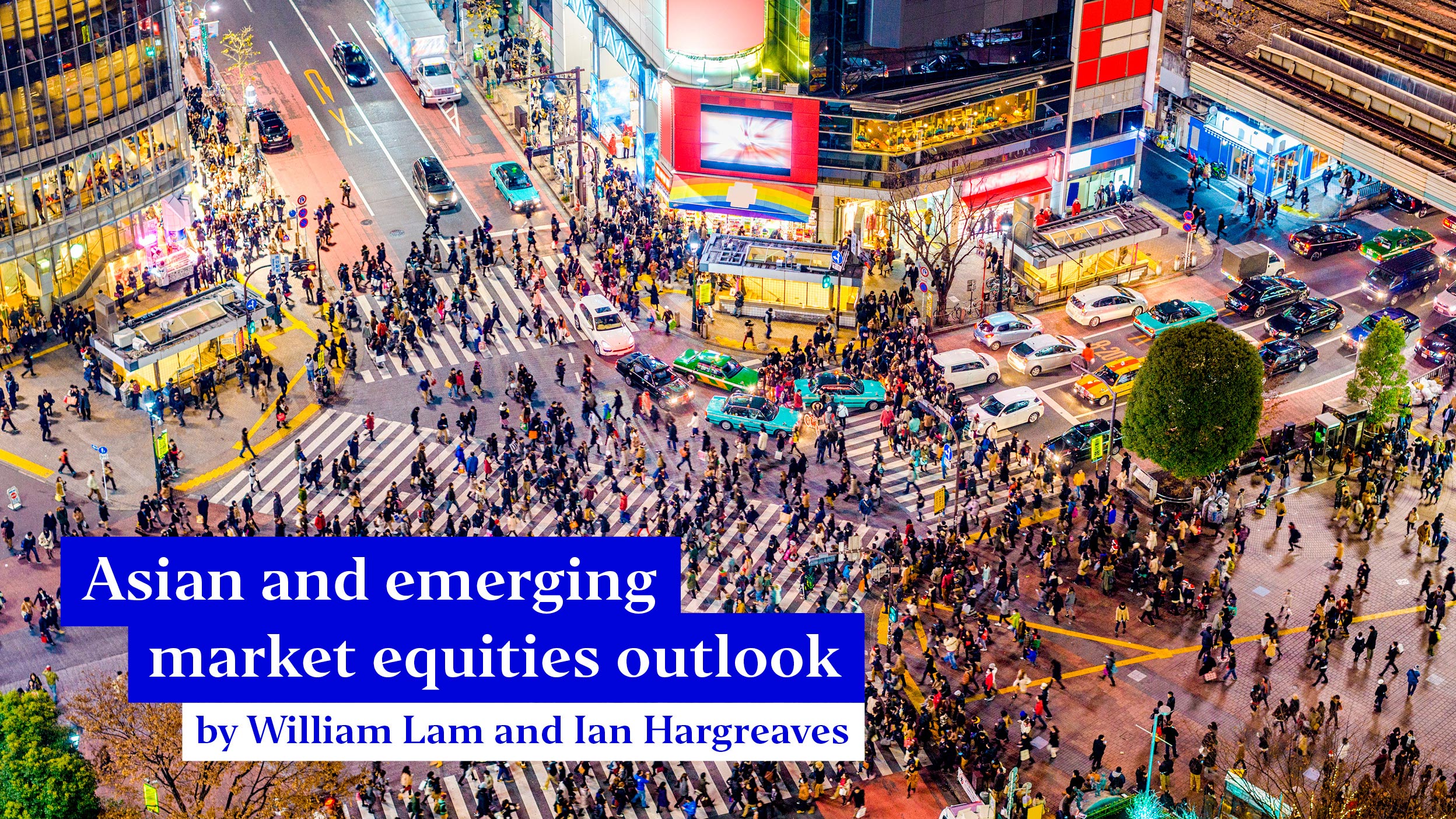2022: Dispersion in Asian and EM equity valuations provide scope to lean into risk

Key takeaways
Grounds for optimism
China: investment risk offers better reward
Leaning into risk
Source: Invesco
Asian and EM equity markets have struggled for much of 2021, with exports growth slowing after a strong recovery and China-related concerns denting investor sentiment. The slow rollout of vaccination programmes in many emerging markets has slowed the recovery, particularly as new Covid variants emerged. Yet, conditions have started to normalise, and looking forward, we find reasons to be optimistic.
Valuation discrepancies between and within markets and sectors remain wide, with scope to lean into areas of excessive pessimism, while avoiding frothy areas of the market. We're wary of investment narratives, which rely on a cyclical recovery being extrapolated too far forward, as we saw with some of last year’s Covid-beneficiaries and China.
Exuberance towards China has given way to disappointment and pessimism, and a much more favourable risk premium is now being offered to investors as we enter 2022. Meanwhile, South East Asian and non-Asian emerging markets have been relatively weak, which we feel underappreciates their re-opening potential.
Grounds for optimism
Returns from Asian and EM equity markets have been less impressive this year than last, which is unsurprising given how strongly valuations rebounded from their lows, reaching levels they have struggled to maintain historically. However, we don't believe this to be the end of the cycle, more a time correction as earnings and growth of book value catch-up.
Markets are pricing in a continued improvement in earnings, which feels logical to us given that the recovery from the Covid-pandemic is still at a tentative stage in some parts of the world, with a tailwind from stimulus measures and relatively low inventories on a global basis. The financial system is also in a much better place than investors initially feared, a marked difference to the backdrop in the recovery from the GFC.
However, it's reasonable to expect a more gradual uptrend in earnings from here – still positive but with the rate of change likely to have peaked. On one hand, supply chain disruptions remain a feature of the post-Covid backdrop, with unmet demand spilling well into 2022. On the other, inflationary pressures are likely to depress the operating margins of price takers.
As markets digest these complexities and potential policy changes, there's much scope for active stock pickers to capitalise on misunderstood, idiosyncratic opportunities, especially given that valuation discrepancies within markets and sectors remain wide.
Fear and uncertainty in China?
It's commonly perceived that: China’s property sector is vulnerable; regulatory tightening of ‘new economy’ sectors has broken business models; and that the domestic economy will continue to slow. We only agree with the latter, and thankfully so does the Chinese government, with policymakers remaining committed to improving the quality, rather than quantity, of growth and reducing financial risk.
The strong rebound in China’s economy provided regulators with an opportunity to tackle animal spirits in the property and internet sectors. The extent of intervention surprised many, adding uncertainty to the mix as investors have had to gauge how far the reform drive will go, triggering a significant de-rating of share prices in affected areas. This has served as a reminder of the importance of understanding businesses prior to investing, with a focus on balance sheet strength a pre-requisite for those seeking to capitalise on volatility.
The philosophical challenge for investors is reconciling China’s anti-market behaviour with laudable goals such as ‘common prosperity’, reducing inequality and financial risk. The market tends to be binary in its opinion of China, as reflected in valuations, but despite negative headlines surrounding the casualties of policy tightening, peak uncertainty tends to be followed by easier conditions.
Furthermore, while the business climate may remain challenging, there are still many very good businesses to consider for investment. After a difficult year, we believe that investment risk is now being far better rewarded, which is why we have been reducing our underweight position in China.
Leaning into risk
Our research efforts are directed towards contrarian ideas, where valuation anomalies naturally emerge. China has been an area of focus, but there are interesting companies operating in other emerging markets, which have struggled for attention in recent years. We find valuation levels to be undemanding, given future growth prospects, and with no need to compromise on quality. Some of these companies have defensive business models, which would have traded on much higher valuations in the past.
As conditions gradually normalise, with travel restrictions lifted on the back of higher vaccination rates, we find scope for optimism towards re-opening plays in areas such as Thailand, Indonesia and Brazil. Consumption has generally been weak, which contrasts with strong demand seen in developed markets, but we would caution extrapolating recent trends too far into the future.
Although the initial benefit of massive monetary and fiscal stimulus measures has been realised and is likely to remain a tailwind to economic activity for a while longer, a riskier point for markets lies ahead as governments in developed markets are forced to start charting a course back to policy orthodoxy. This contrasts with Asia’s conventional policy stance.
Finally, inflationary pressures are likely to remain a focus for investors. We feel that the best way to insure our portfolios against a more adverse inflation outcome is to avoid stocks whose current market valuations cannot be justified by their future cash flows even at current low interest rates. We believe that this is an environment that suits our investment approach, with a laser focus on valuation, seeking to find out where the market has failed to correctly price the multi speed nature of the recovery.



